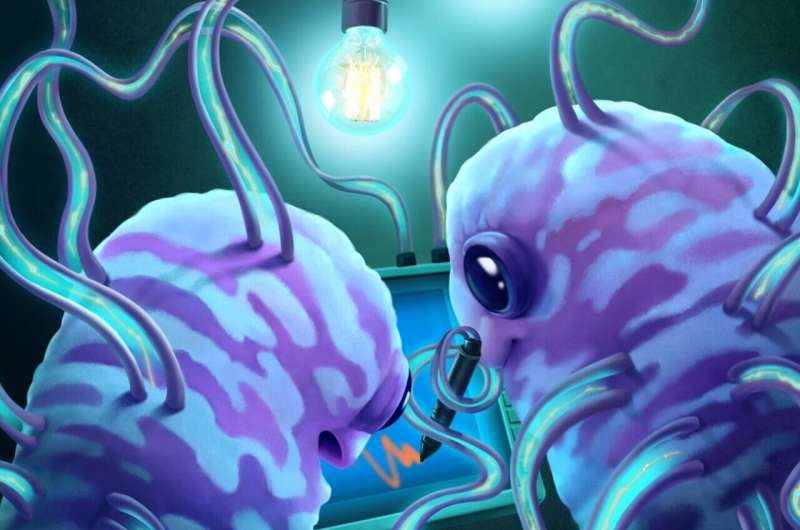“Nanowires” produced by Geobacter in response to an electric field applied to electricity-producing biofilms. These nanowires are composed of cytochrome OmcZ and show 1000-fold higher conductivity and 3-times higher stiffness than the nanowires of cytochrome OmcS important in natural environments, allowing bacteria to transport electrons over 100-times their size. Credit: Sibel Ebru Yalcin. Design: Ella Maru Studio
Accelerated climate change is a major and acute threat to life on Earth. Rising temperatures are caused by microbes producing 50% of atmospheric methane which is 30 times more potent than CO2 at trapping heat. These elevated temperatures are also accelerating microbial growth and thus producing more greenhouse gases than can be used by plants. This weakens the Earth's ability to function as a carbon sink and further raises the global temperature.
A potential solution to this vicious circle could be another kind of microbe that eats up to 80% of methane flux from ocean sediments. But these organisms are difficult to study in the laboratory. In Nature Microbiology, a Yale team led by Prof. Nikhil Malvankar and former Ph.D. student Yangqi Gu discovered surprising, wire-like properties of a protein made by electricity-producing Geobacter that show similarity to those of methane-eating microbes.
The Malvankar lab had previously reported that this protein wire shows the highest conductivity known to date, allowing bacteria to produce the most electric power reported so far, and explaining how these bacteria can survive without oxygen-like membrane-ingestible molecules. To date, no one had discovered how they are made or why they are so conductive.
Using high-resolution cryo-electron microscopy, the researchers were able to see the nanowire's atomic structure. They discovered that hemes were packed closely to move electrons extremely quickly with great stability. The team also built some nanowires synthetically to explore how bacteria make nanowires on demand.
"It is possible we could use these wires to generate electricity or understand how methane-eating microbes use them to combat climate change," Malvankar said.
More information: Yangqi Gu, Structure of Geobacter cytochrome OmcZ identifies mechanism of nanowire assembly and conductivity, Nature Microbiology (2023). DOI: 10.1038/s41564-022-01315-5. www.nature.com/articles/s41564-022-01315-5
Journal information: Nature Microbiology
Provided by Yale University
























